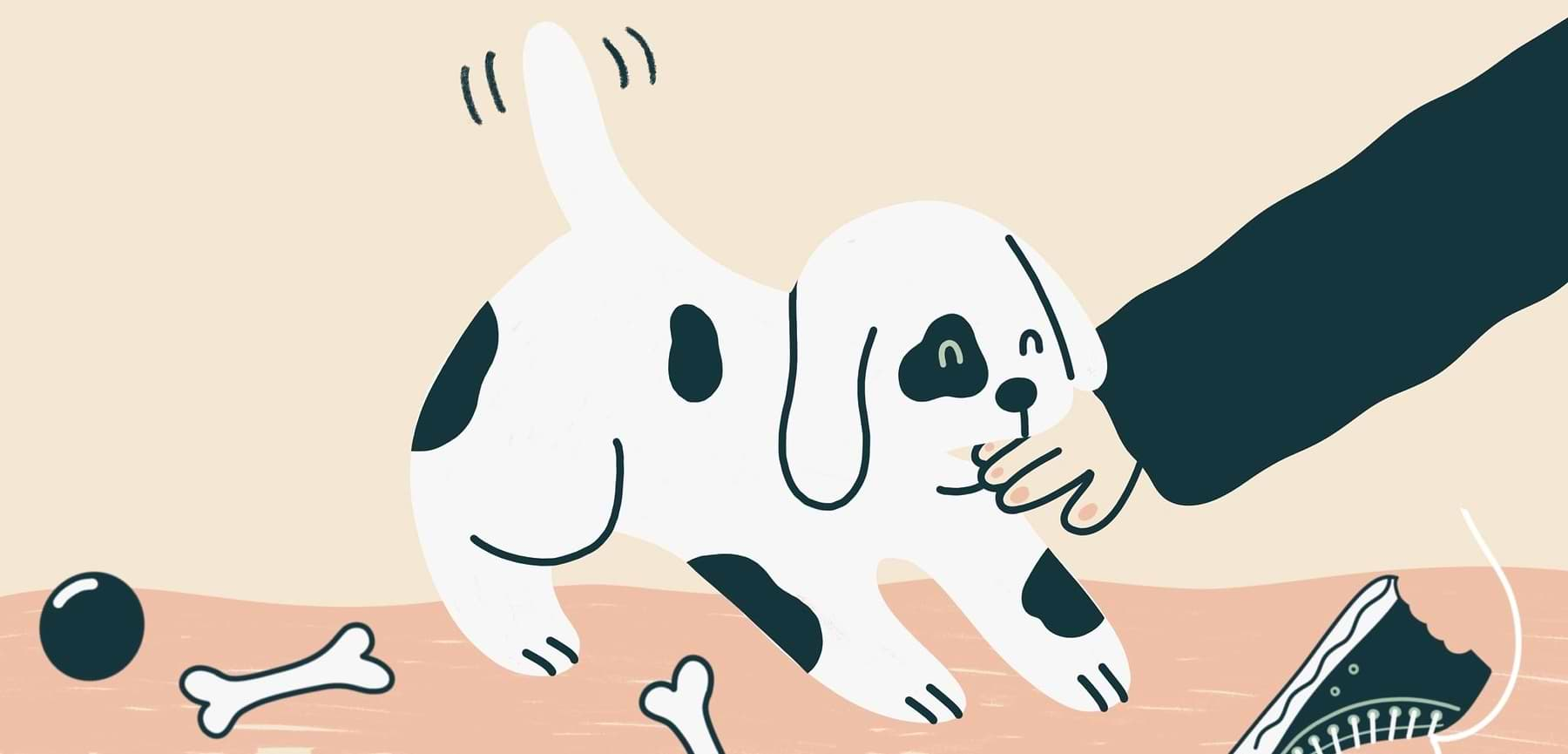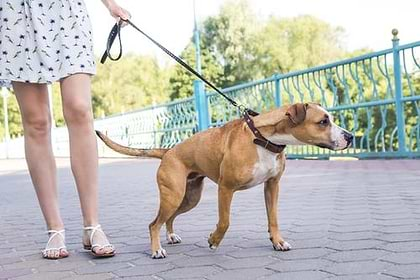
Although puppies look adorable, at times they seem to be nothing more than walking teeth! It’s extremely common for puppy owners to struggle with their new pet’s biting, nipping, and chewing behavior. If you’re experiencing these same issues, know that you’re not alone. It’s rare that a puppy doesn’t nip their owner or destroy furniture and slippers. But rest assured, as typical as these problems are, you can do something about them.
Dealing With a Nipping Puppy
Your puppy is most likely nipping you because they want to play. So, you can use that to your advantage. Your puppy should only get what they want, your attention, when you get what you want, a gentle mouth. Whenever your puppy is nipping you, immediately turn away and withdraw your attention. Give your puppy a few seconds to calm down, then turn back and try again. If they play nicely, calmly praise and reward them with further play. If they nip again, repeat your withdrawal.
This clearly demonstrates to your puppy the consequences of their actions. In fact, it’s the way puppies play with each other. If one pup gets too rough, the others will stop the game. To help your puppy learn their lesson, you can also mark the moment teeth touch your skin by saying “ouch” in a calm tone of voice. The point is not to scare your puppy, but for them to realize they went too far. The “ouch” will come to signal the end of the game. You can also try a high-pitched “yip” sound like a fellow puppy would make. This stops some pups in their tracks, but others get even more excited, so only do this if it works for your puppy.
The key is to positively reinforce the behavior you want. Always give your puppy a second chance to play nicely. And if they do, let them know how great that is. In fact, any time your puppy is interacting with you without nipping or biting, continue the interaction to reward that behavior. In addition, calmly praise your pup so they know they are doing the right thing.
As in all dog training, set your puppy up for success. Don’t rile them up with rough play and then be surprised when they nip you. If your pup is overexcited, you can’t expect them to make good decisions or to learn lessons about appropriate play. Stay calm and consistent. If you get angry or loud, your puppy might interpret that as playing and you’ll encourage them rather than discourage them. Finally, don’t punish your puppy for nipping. You never want your dog to associate you with negative things because that will erode your bond and break down trust.
If your ouches and withdrawals are not working, then now is probably not a good time to play. Your puppy might be overtired, in need of a potty break, or simply too riled up to learn. Let them have some quiet time in their crate or expend some energy by running around before you try again. You can also redirect your puppy’s attention to something more appropriate like a stuffed toy or chew toy. Keep a bunch in every room so you can provide one as soon as you sense your puppy is in a nippy mood.
Redirecting Your Puppy to Appropriate Chew Toys
Chewing is a natural behavior in dogs of any age, but in puppies it’s also a great way to relieve the pain of teething. Unlike nipping, you can’t teach your dog not to chew. In fact, it’s your responsibility to provide your dog with appropriate chew toys for life. So, the trick with a chewing puppy is to teach them what they can and cannot chew and to redirect their instincts to dog-friendly items.
First, provide your puppy with a wide variety of chew toys. Choose items with different textures, scents, and materials so your puppy can select what suits them best at a given time. Depending on their mood or the pain in their gums, they might like harder plastic bones or softer rubber toys for example. Food-stuffed rubber chew toys are another great option. You can also freeze them to help soothe your puppy’s gums while they chew. Keep several toys available in each room so your puppy always has a safe chewing option at the ready.
Second, minimize your puppy’s access to inappropriate chew items—that means keeping your property out of your puppy’s reach. Remember that everything is a chew toy in your pup’s eyes. So, remote controls should go in drawers, shoes in closets, and books on high shelves. You can also use a crate or baby gate to manage your puppy’s access to specific areas when you can’t be supervising them.
Now that your puppy has loads of appropriate chew toys and you’ve minimized their access to off-limit items, it will be easier for your puppy to make good choices. And when they do, make a big fuss. Tell them how wonderful they are, and even slip them a few treats. Too often, puppies only get attention when they make the wrong choice. That leads to a puppy who deliberately grabs inappropriate items just for the chance to interact with their humans. If your puppy starts chewing something they shouldn’t, immediately redirect them to a proper chew toy. When they turn their attention to the preferred item, praise them so they know they made the right choice.
The chewing and nipping phase is a tough one for all puppy owners. But we hope these tips will help you redirect your puppy’s natural instincts and teach them how to appropriately interact with people. Stay consistent and by the time your puppy has their adult teeth, they’ll have developed good habits for life.

Stephanie Gibeault
Stephanie Gibeault is a freelance writer and certified professional dog trainer with a Master of Science in animal behavior. She is passionate about combining her love of animals with her writing skills to educate and entertain. When she’s not at her keyboard, you can find her tap dancing, taking photographs, or tweeting (@GibeaultWrites).
You might also like
Crate training tips, stories and inspiration
View all blogsIn Your Diggs
Share your photos with #DiggsPet and tag us @DiggsPet on IG and TikTok.


